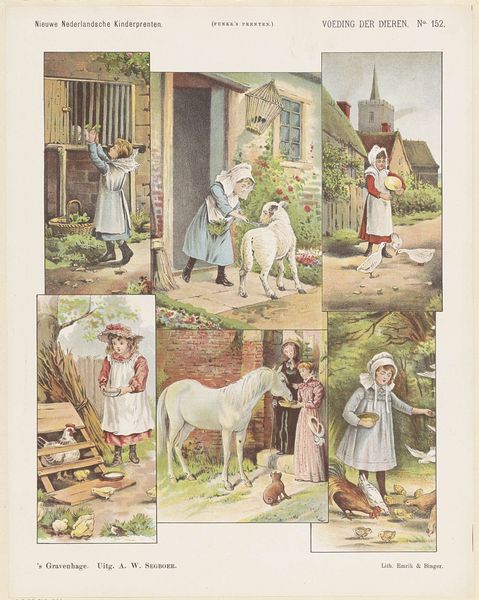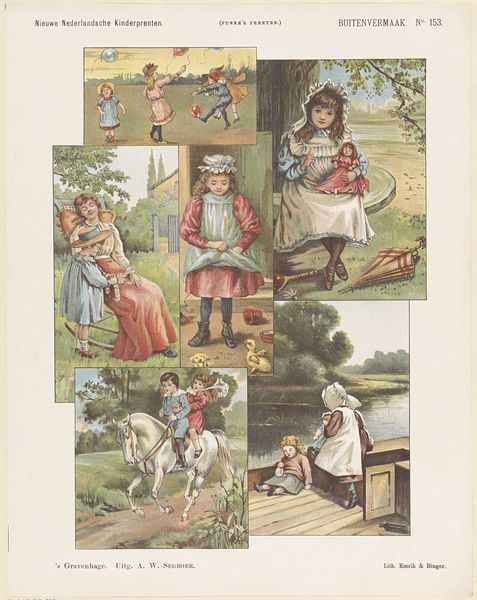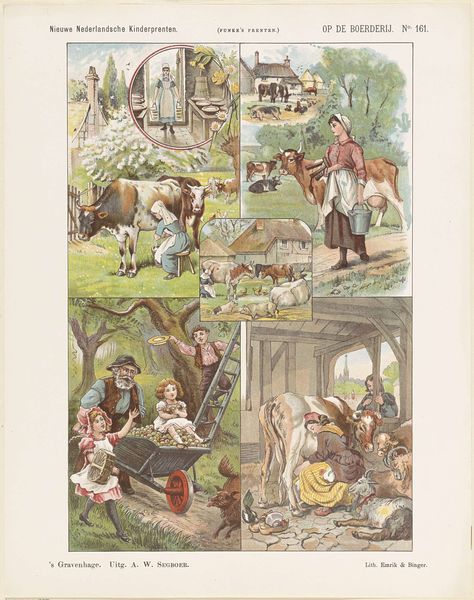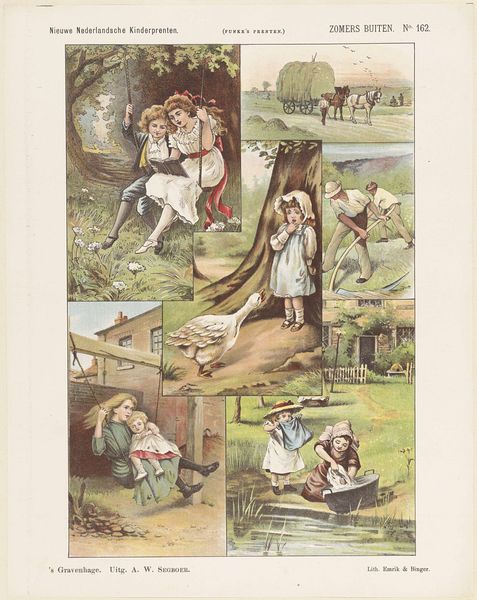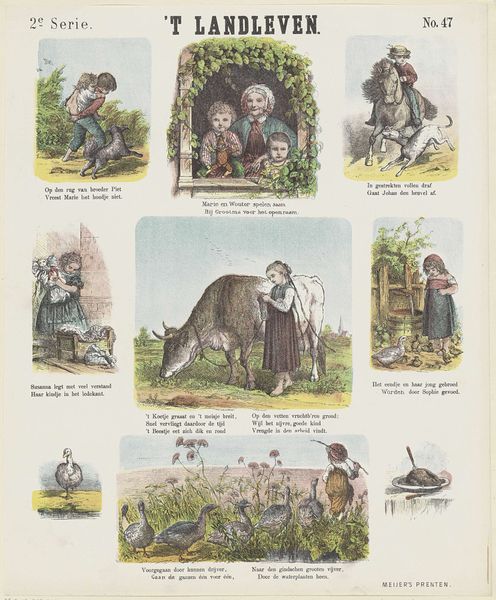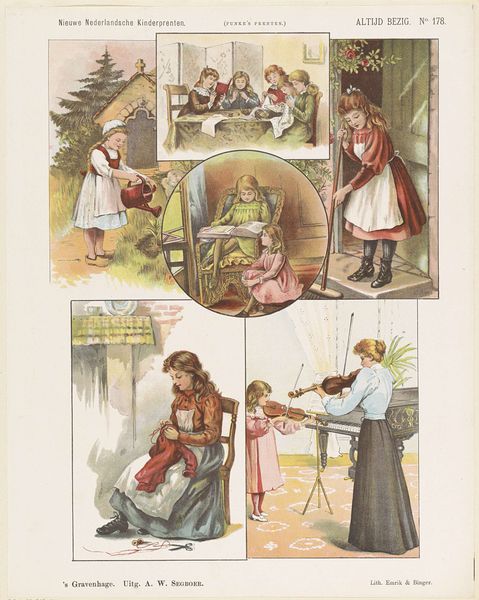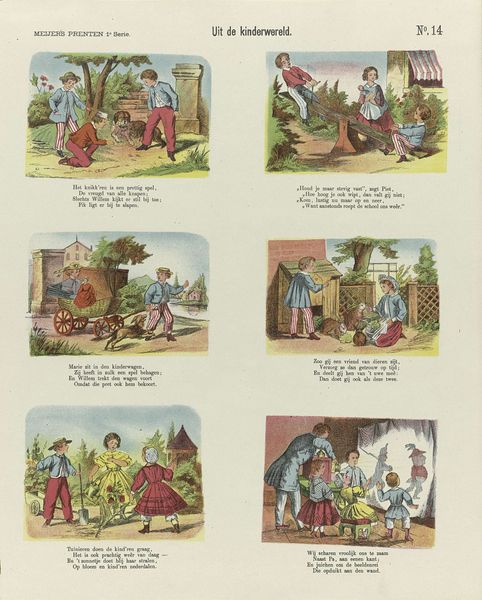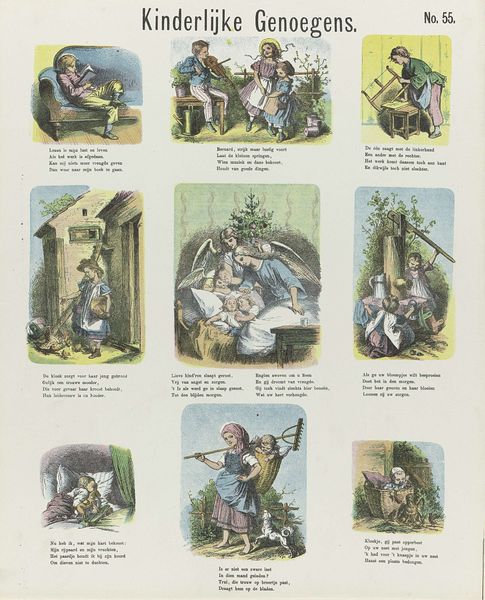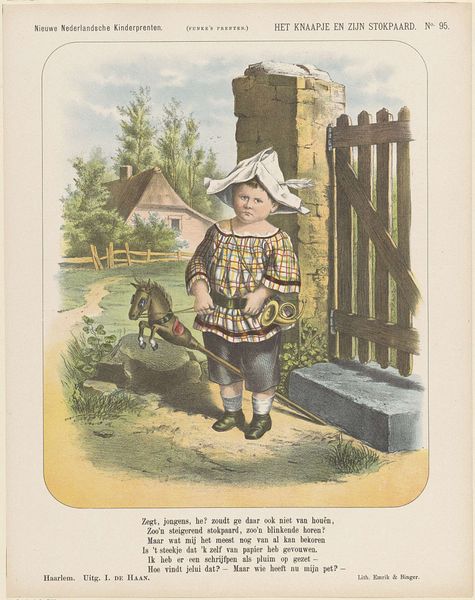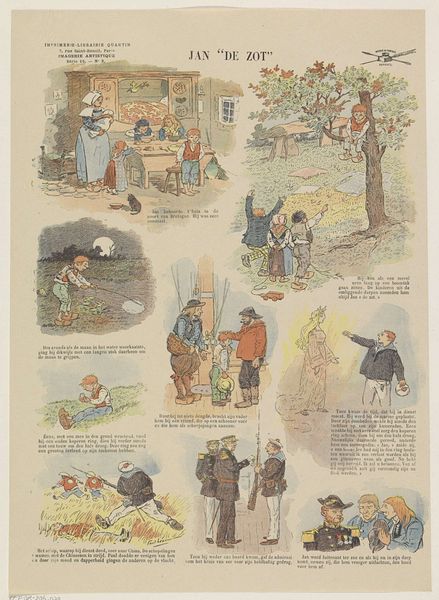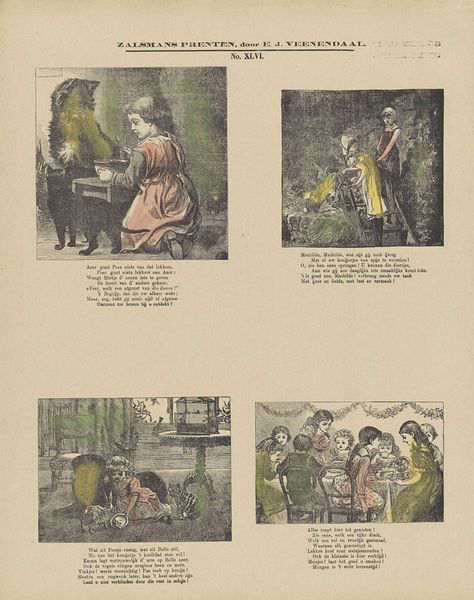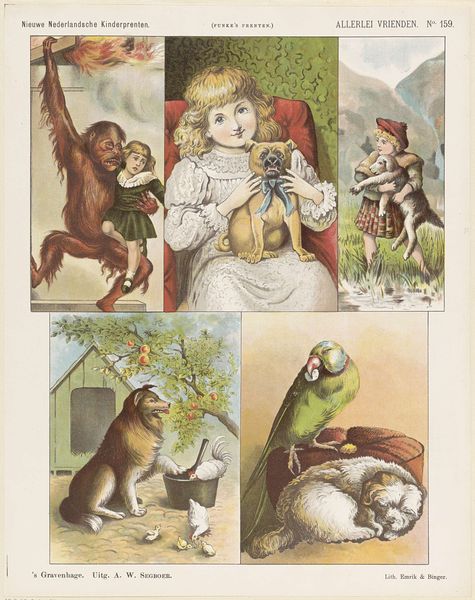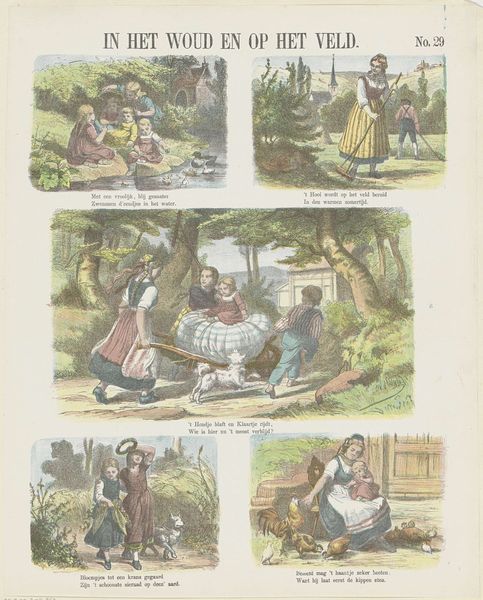
drawing, print, acrylic-paint
#
drawing
# print
#
landscape
#
acrylic-paint
#
folk-art
#
genre-painting
Dimensions: height 439 mm, width 347 mm
Copyright: Rijks Museum: Open Domain
Editor: So, here we have Arie Willem Segboer's "Bij de Boeren," dating from the early 20th century. It seems to be some sort of print, maybe with acrylic paint added, depicting rural life through several vignettes. I’m immediately drawn to the repetition of figures, almost like a storyboard. What stands out to you about this piece? Curator: What fascinates me is precisely that seriality and its relationship to mass production. It’s labelled "Nieuwe Nederlandsche Kinderprenten," meaning 'New Dutch Children’s Prints.' Think about it – this wasn't a unique painting, but an item made for broad consumption. The ‘folk art’ theme speaks volumes, as its mass production suggests that its rustic charm was, in effect, industrialised. How does the use of acrylic and printmaking techniques contribute to or challenge traditional definitions of fine art? Editor: That's a great point! The printmaking situates it firmly within a context of accessibility and affordability, yet someone has come in and painted on it too... Does that added layer elevate the piece into a fine art object, or simply enhance its appeal to consumers? Curator: Consider where the value truly lies. Is it in the supposed authenticity of hand-applied paint, or is the artwork’s value connected to the printing and reproducibility? What does the division of artistic labour reveal, when industrial printers produce images meant to symbolize artisanal values? Is this a piece speaking more about commodity or folklore? Editor: That gives me so much to consider about its purpose! I never would have considered mass production's implications when approaching this seemingly quaint pastoral piece. Curator: Exactly! By examining the processes and methods used in producing "Bij de Boeren", we gain insight into the ways the line between fine art and craft has been manipulated. Hopefully, listeners gain fresh perspective through looking at materials and techniques and the means of its circulation!
Comments
No comments
Be the first to comment and join the conversation on the ultimate creative platform.
